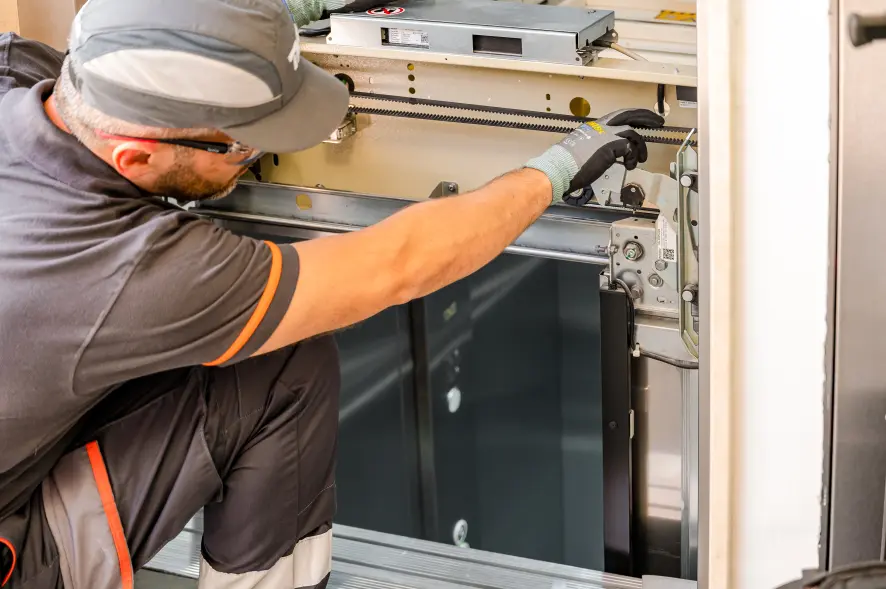Comprehensive Upkeep Checklist for Ensuring Optimum Efficiency of System Lifts for Handicapped People
Keeping the optimum performance of platform lifts marked for people with impairments is a crucial facet of ensuring their safety and ease of access. The dependability of these lifts is paramount, and a thorough upkeep checklist can assist in upholding their capability - elevator maintenance. From regular inspections to precise cleansing procedures, each action plays a substantial function in assuring that these lifts operate smoothly and safely. However, there is a crucial element often neglected that can significantly impact the overall efficiency and security of these lifts.
Assessment and Cleaning Treatments
To guarantee the optimal functioning and safety of platform lifts, comprehensive and routine examination and cleansing treatments have to be diligently complied with. Any kind of signs of wear and tear, unusual sounds, or breakdowns need to be addressed promptly to keep the lift's performance and avoid crashes.

Lubrication and Greasing Methods
Routine maintenance of system lifts extends beyond assessments and cleaning treatments to include the vital facet of lubrication and oiling strategies for ideal efficiency and durability. Lubrication plays an important function in making sure smooth procedure and preventing damage on relocating components. When it pertains to platform lifts for impaired individuals, appropriate lubrication is essential to keep secure and trusted capability.
To start, it is vital to use the right sort of lube for each and every component of the platform lift. Different components might call for particular lubricating substances such as silicone-based or lithium-based oils. Routinely inspecting the condition of the lubricating substance and guaranteeing correct degrees are preserved is key to stop rubbing and deterioration.
Additionally, oiling methods must be executed following supplier standards and upkeep schedules. Over-greasing or under-greasing can both cause operational problems, so it is very important to strike the best equilibrium. By sticking to a detailed lubrication and oiling regimen, system lifts can operate effectively, silently, and securely, eventually profiting the people who count on them for ease of access.

Electric System Checks and Testing
Upkeep of system lifts consists of comprehensive checks and strenuous testing of the electric system to ensure optimal efficiency and safety. The electric system is an essential component of platform lifts for disabled individuals, as it powers the lift mechanism and numerous safety and security functions.
Routine screening of the electric system is vital to prevent breakdowns, minimize downtime, and make certain the safety and security of lift customers. By focusing on detailed electric system checks and screening as component of regular upkeep, platform lift owners can lengthen the life-span of their tools and give a secure transportation option for individuals with specials needs.
Safety Device Verification

Furthermore, the over-speed guv, a crucial security attribute that stops the lift from moving also swiftly, must go through detailed testing to verify its efficiency. It is additionally essential to check out the interlock system that makes sure the doors are safely secured while the lift is in procedure. Regular confirmation of these safety mechanisms is vital in supporting the security requirements of platform lifts and securing the health of users.
Emergency Situation Readiness and Action
In times of crisis, a well-defined emergency readiness and response plan is basic to making certain the safety and protection of platform lift individuals. Platform lifts are important for allowing handicapped people to accessibility different levels of structures, making it vital to have measures in position for emergency situations. Emergency readiness look at this web-site involves performing regular drills to familiarize users and team with emptying treatments in situation of power blackouts, mechanical failures, or other unforeseen incidents. It is important to prominently show emergency situation get in touch with info and instructions for customers in easily accessible styles near the lifts. Upkeep workers should additionally be trained to promptly react to emergency telephone calls and fix any concerns successfully. Additionally, establishing communication protocols with relevant authorities, such as developing administration and emergency situation solutions, can assist in a coordinated feedback during crucial situations. By prioritizing emergency situation readiness and response, platform lift drivers can boost the general safety and security and performance of these crucial access devices for disabled individuals.
Verdict
To conclude, normal upkeep of system lifts is necessary for making sure ideal performance and security for disabled individuals. elevator maintenance. By following a thorough checklist that consists of examination, Continue cleansing, lubrication, electrical system checks, safety mechanism confirmation, and emergency situation preparedness, the risk of breakdowns and crashes can be minimized. It is essential to prioritize upkeep to supply a trustworthy and effective means of transport for people with impairments